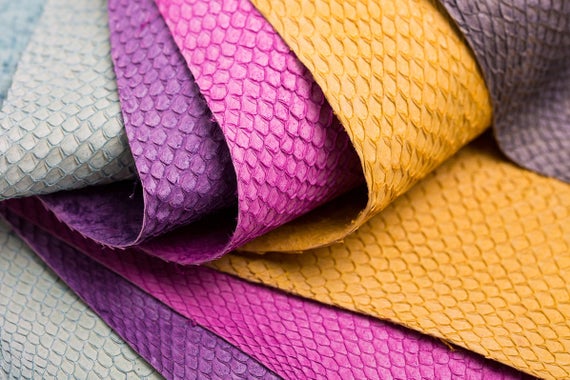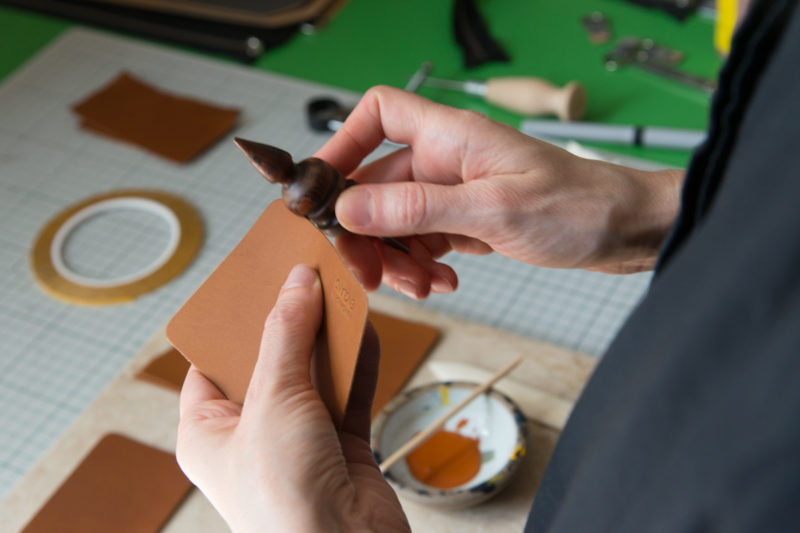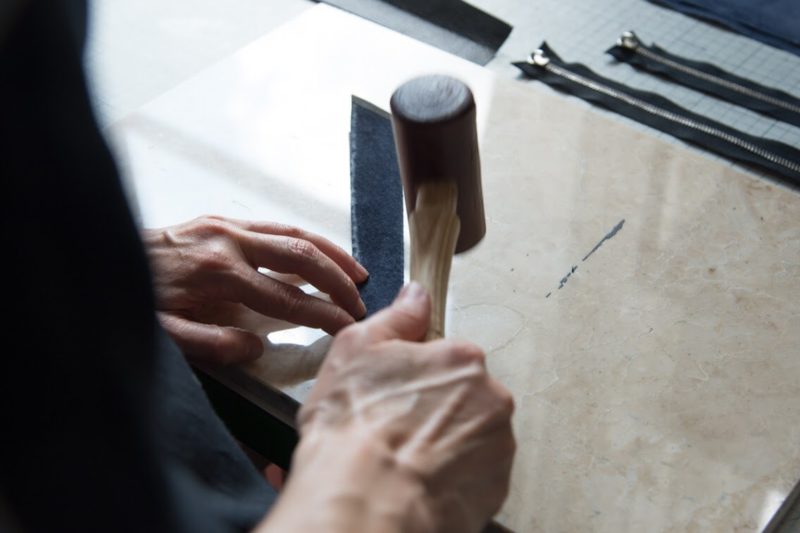Fish Leather: The Unsung Hero of the Leather Industry
If you ever start a conversation about ‘fish leather’ in a group of 10 people, 8 of them are definitely going to say “Wait, there’s fish leather?”. We all know leather from the skins of different animals and the exotic leathers are mostly from reptiles. But, throughout history, it has helped coastal civilization rise to its greatest.
In this article, we go through the unsung hero of the leather industry – fish. With the growing popularity of sustainable clothes, this might become your next choice for your luxury leather project.
Types of Fish Leather From All Over The World
- Salmon Leather (farm-raised, Faroe Islands)
- Wolf Fish Leather (wild-caught, Iceland)
- Cod Leather (wild-caught, Iceland)
- Tilapia Leather (farm-raised, Kenya)
- Perch Leather (farm-raised, Kenya)
- Stingray Leather (wild-caught, Thailand)

Historical Importance of Fish Leather
- The Egyptians used this method centuries ago. Historically employed by many coastal communities, crafting from fish skins is an age-old art now resurrected with modern tanning and dyeing methods.
- Native Icelanders crafted their boots from wolffish leather and generally calculated travel distances by how many pairs of shoes would be worn out walking around the road.
- Water-resistant salmon leather was used in bags, parkas, and clothing in Alaska and the Pacific Northwest.
- The Hezhe ethnic tribe from northeast China was also recognized as the “fish leather tribe” because of their ancient fish skin outfit.
- Gregine-crafted from the hides of rays and sharks was used in more modern places as early as the sixteenth century to cover weaponry and knife blades. Fish leather was used as premium upholstery fabric for perfume bottles, powder boxes and cases in the eighteenth century, and it became popular in handbags, cigarette cartons and furniture especially during the Art Deco period (1920-1939).
Modern Approach to Fish Leather

Nowadays, it is used by contemporary fashion and shoe designers as well.
- For instance, Gucci’s trendy boots come with salmon leather and spotted catfish.
- Nike made carp and salmon leather sneaker sports shoes which arrive from Denmark.
Why is Fish Leather Important For the Modern Society?
It is made environmentally sustainable in two distinct ways:
- It is a by-product of the fishing industry, using raw material that would not otherwise be used; and clean hydro and geothermal technology is used in the manufacturing process.
- The tanning and dyeing processes used for fish are much less harmful to the skin and atmosphere than those used for mammal leathers, which involve powerful chemicals that emit gasses such as hydrogen sulfide (an incendiary, toxic, and combustible gas) to remove the fur from the hide. This process is unnecessary since fish have no feathers. The scales can be stripped, but never through chemical processing.
Nevertheless, advancement in leather making from aquatic skins could help fashion industry reduce its impact on the environment in the following ways:
- Fish leather is extracted from a waste product, and therefore nothing ‘new’ is raised or cultivated for the production of fish leather. This saves valuable natural resources and avoids additional emissions/pollution.
- It is a natural, sustainable, and biodegradable product.
- It has no post-use disposal problems since fish leather deteriorates back to nature.
- Vast amounts of property, energy, and additives are used in cattle rearing for leather and meat industries. It may also contribute to deforestation – whereas fishing does not require land clearance.
How to Care For Fish Leather?
Fish leather demands the same maintenance as any leather product. Clean the area with mild water and soap, or using a suede cloth. Use a polishing towel on a silver and gold setting. Resist bathing in your jewellery and excessive water immersion (washing hands is fine). Copper bracelets are adjustable; squeeze and shape for a convenient fit on your wrist.

Is Fish Leather Waterproof?
Since it was heavily popular in the coastal areas, it is known to have the waterproof quality to it. Traditionally, it was used on clothing that gets wet, including shoes. It was also used to craft fresh water bottles and carrier pouches.
Fish Leather Brands We Love
Following are some fashion-forward brands we love, who use sustainable material in their accessories.
- Real True:
Unlike Icelandic salmon, Brazil’s Real True uses pirarucu, one of the world’s biggest freshwater fish which is also a staple meal for the inhabitants of the Amazon Basin. Not only is the manufacturing carried out in an entirely natural way and without toxic additives, but the production of such accessories provides local communities with alternate forms of employment especially for those who are likely to cause deforestation of the Amazon rainforest by logging and cattle ranching.
- Viona Blu:
Since 2012, Sirpa Kalliola’s Viona Blu label has been specializing in luxury fish leather accessories. Favoured by Finland’s First Lady herself, elegant creations made by Kalliola were featured at fashion weeks in New York, Copenhagen and Hong Kong. The designer decided to follow her dream after studying fashion in Brussels and working for Louis Vuitton and introduced her fashion brand. At first, she tried different styles of hides but fell in love with it for its toughness and the quality it brings to every accessory. You can see her Louis Vuitton’s expertise via her designs. Her pieces are made with perfect attention to detail and in an elegant, trendy style.
- Daughter of Jon:
Headquartered in London, the fish leather used to make the bright, streamlined designs for Daughter of Jon’s company, is also made from Iceland’s waste skins. All items are manufactured in the UK and Europe under fair work practices using renewable hydro- and geothermal energy to create the bags. Each piece is handmade and unique, and we particularly like how the fish’s natural imprints are highlighted as part of the trendy clutch designs.
Where to Buy Fish Leather?
Some of the companies where you can go to buy them from are as follows:
- Atlantic Leather:
Atlantic Leather is an Icelandic tannery specializing in the manufacturing of rare fish skin products. It is stationed in Sauðárkrókur, a remote yet lively village of about 3000 inhabitants. Atlantic has been a leading enterprise in development from the earliest stages. For starters, it is the only business in the world to manufacture wolfish leather, and it is also the only tannery in the world that has successfully created a method of producing washable salmon leather.
- Kalaparkki:
From the very beginning, Kalaparkki manufactures fish skin leather with traditional vegetable tanning. Ready-made, traditionally made leather is produced in about four weeks of treatment, through almost 20 stages of work. In Finland, their wallets and bags are sewn with the aid of leather artisans of the fourth generation.
- Tilapia Fish Leather, Tanzee Designs:
Tanzee Designs produce eco-friendly handmade lightweight suede Tilapia Fish Skin Leather.
With the growing importance of sustainable clothing in today’s society, we are sure to see people and brands focusing on fish leather. If you are thinking of starting your next project, it should be on your mind.
Nosakhari helps leather businesses and brands craft their unique leather products. Our services include sample making, prototyping leather and sourcing high-quality leather from all over Europe. We offer consultation for leather brands and how to make their project successful.





